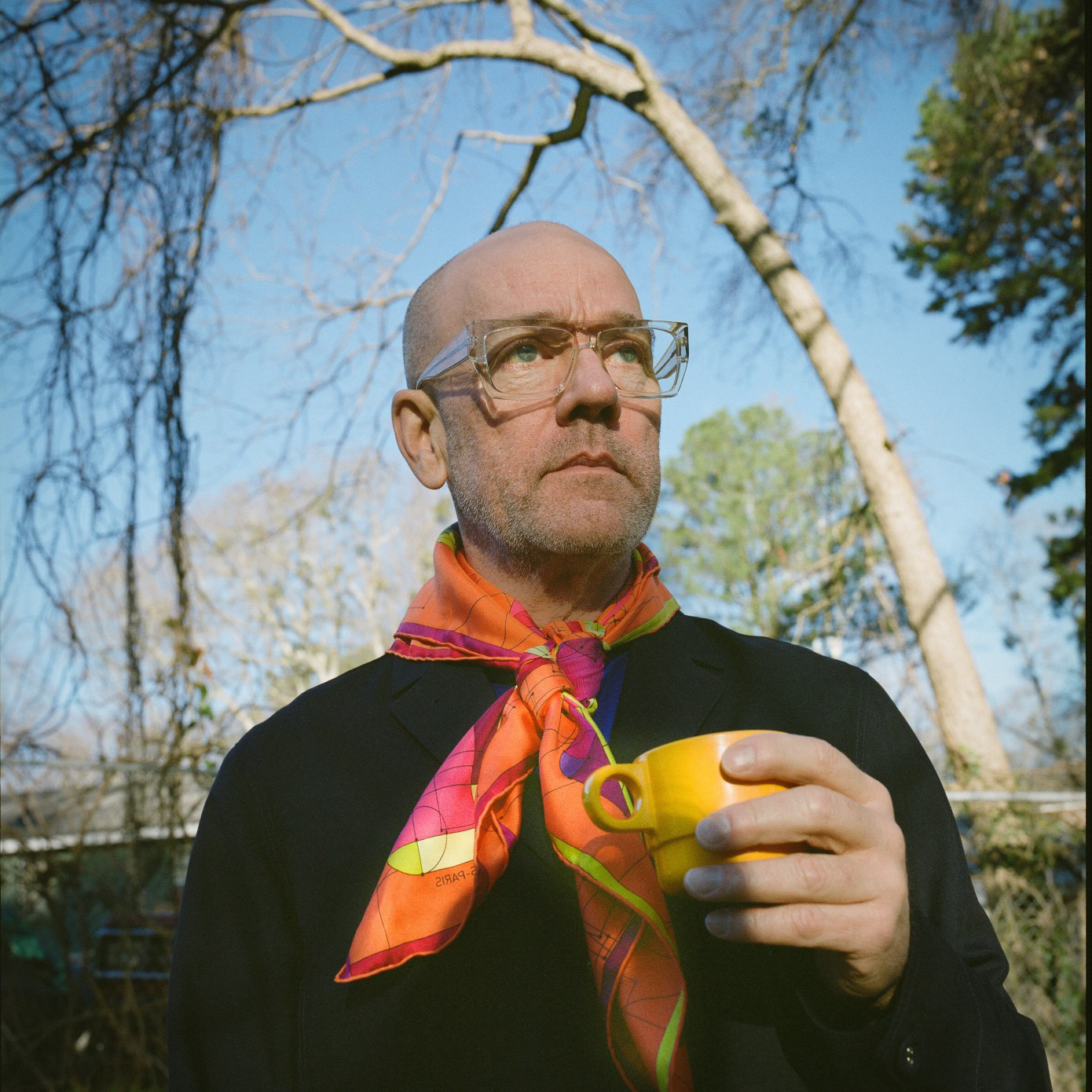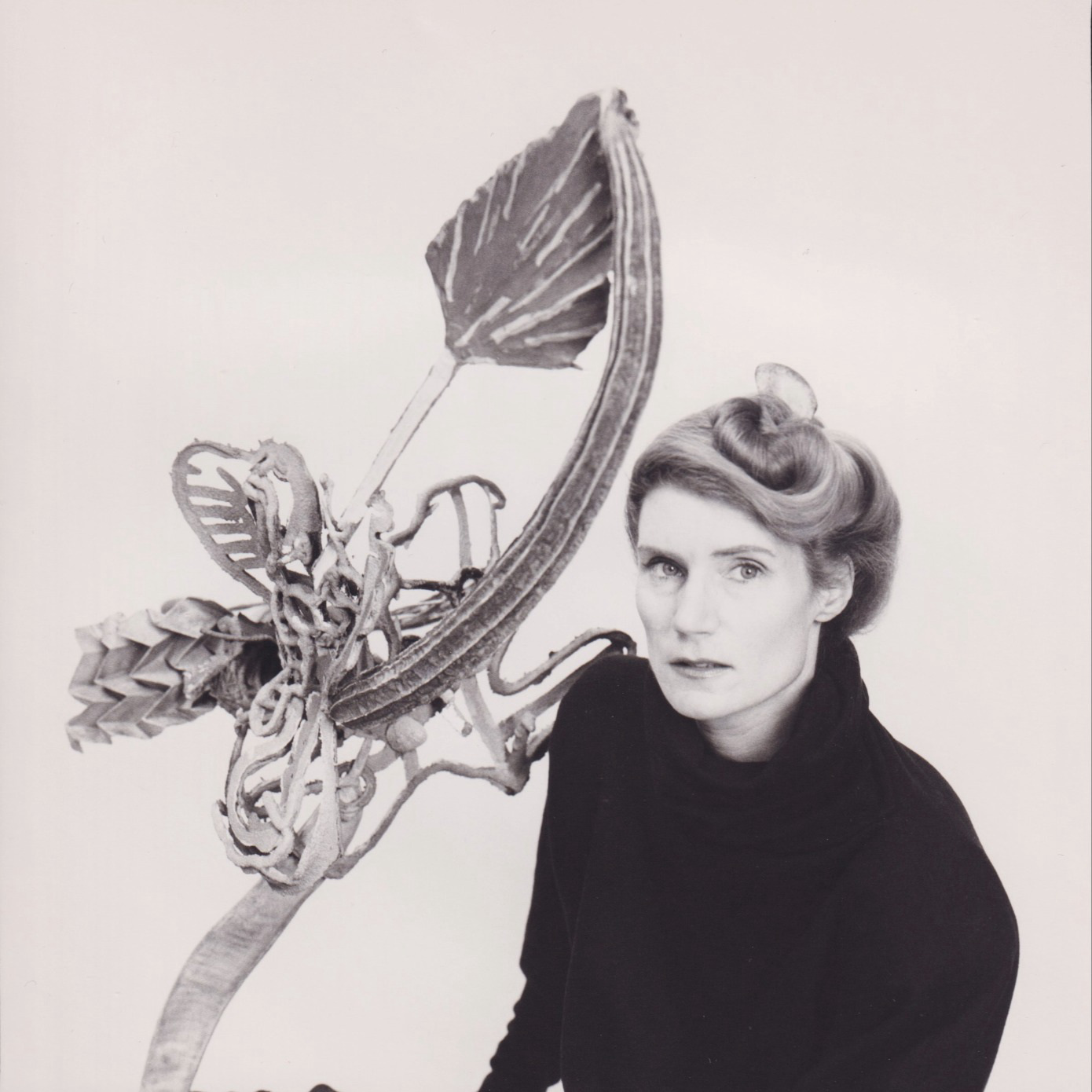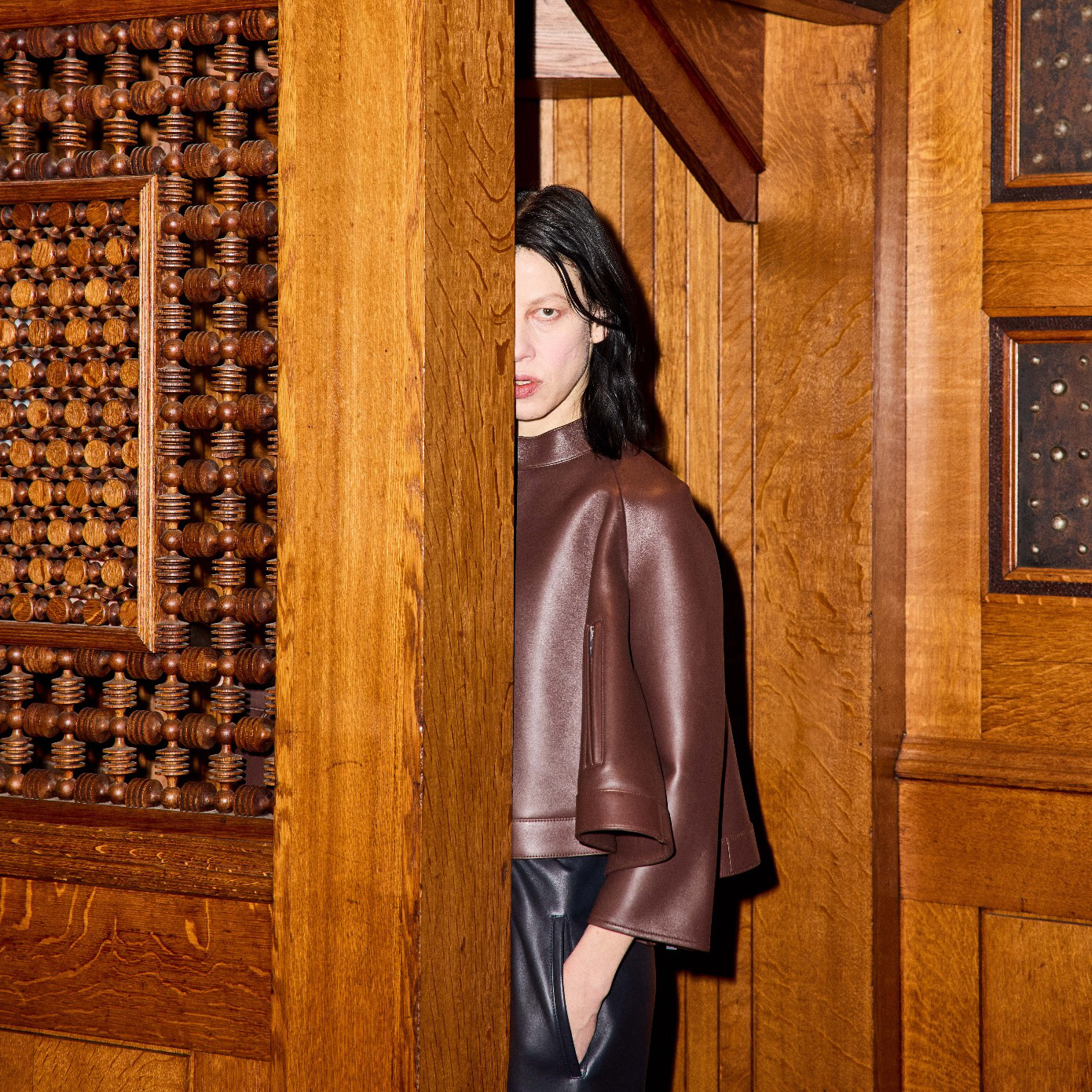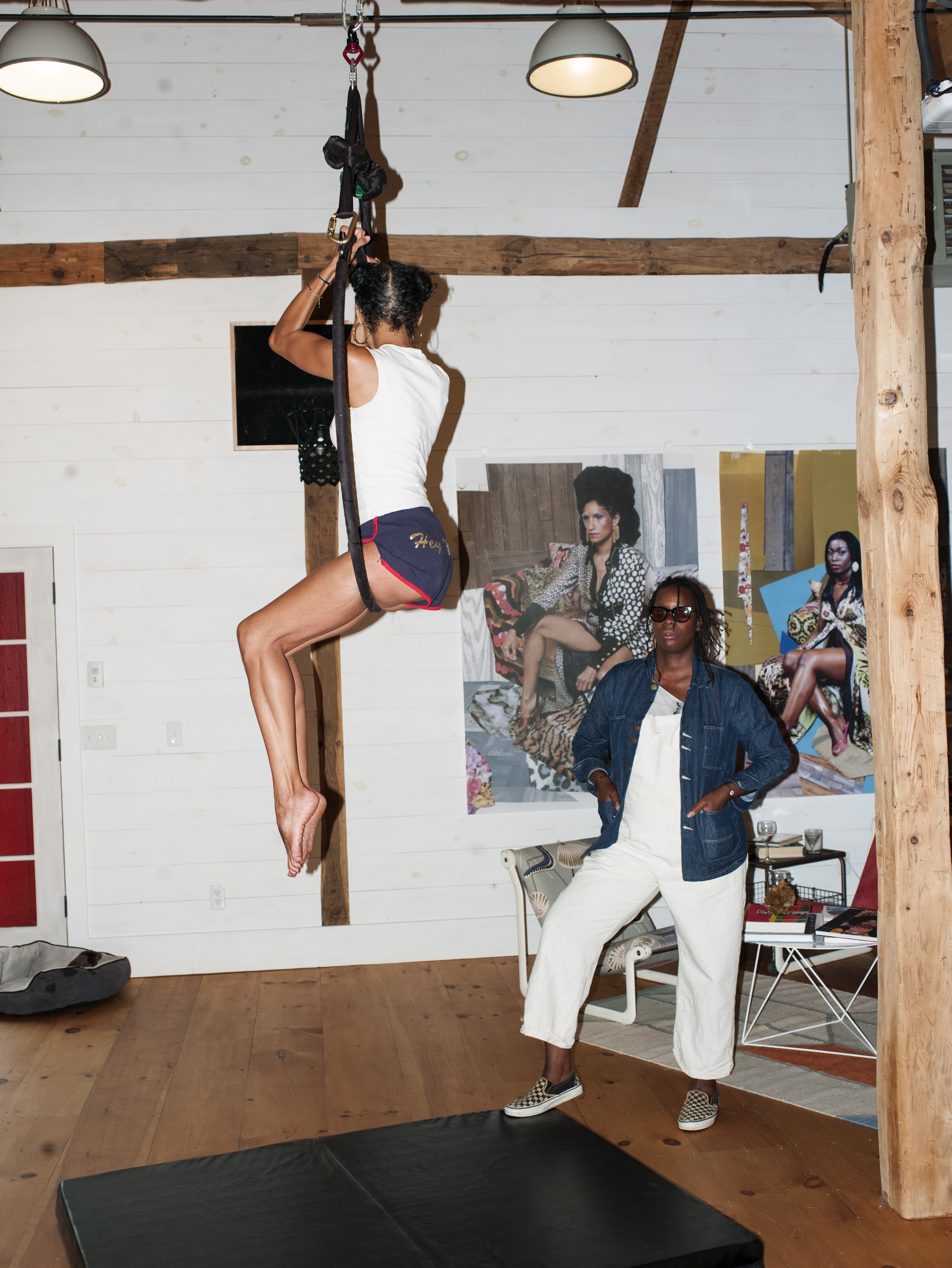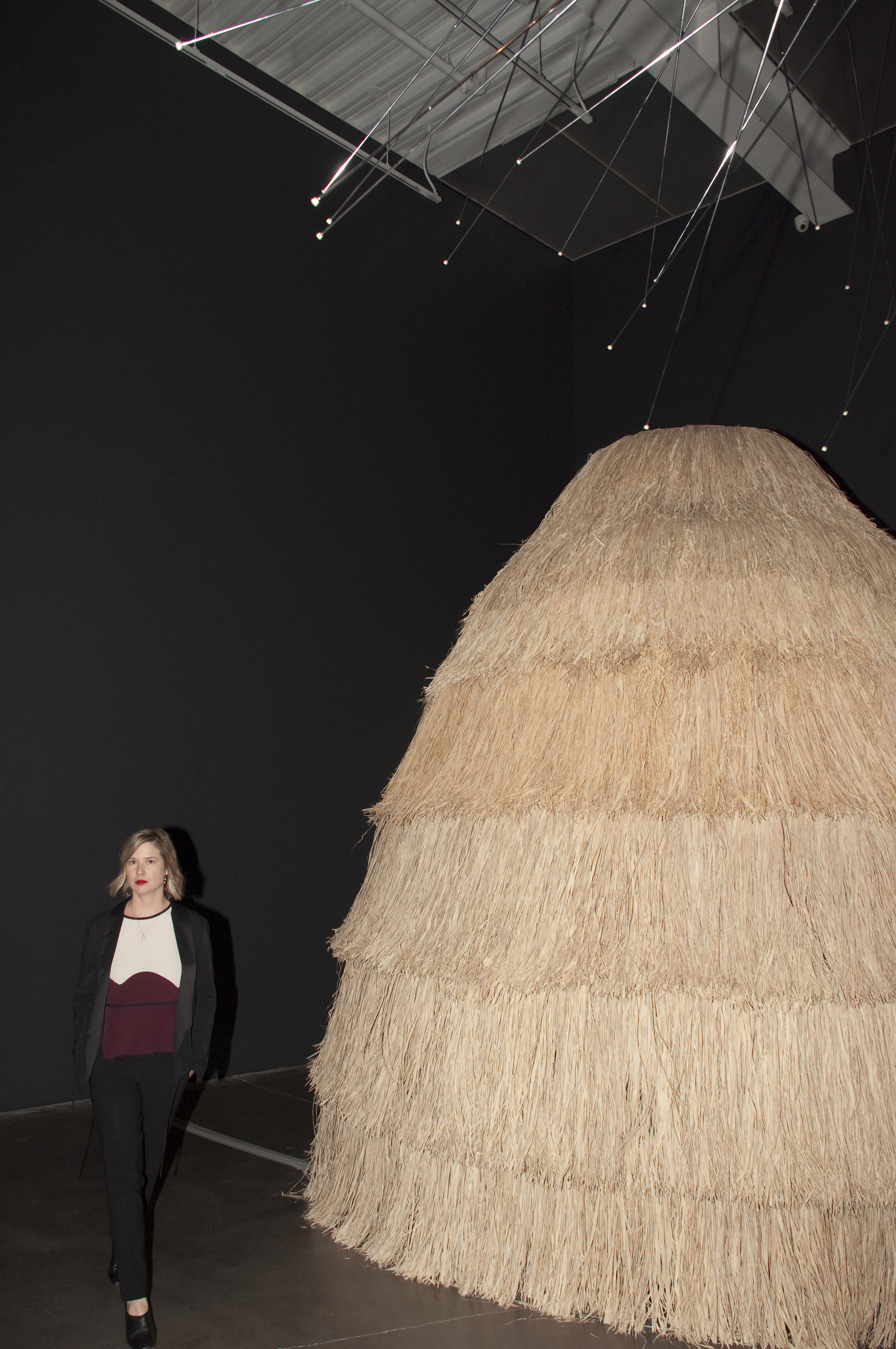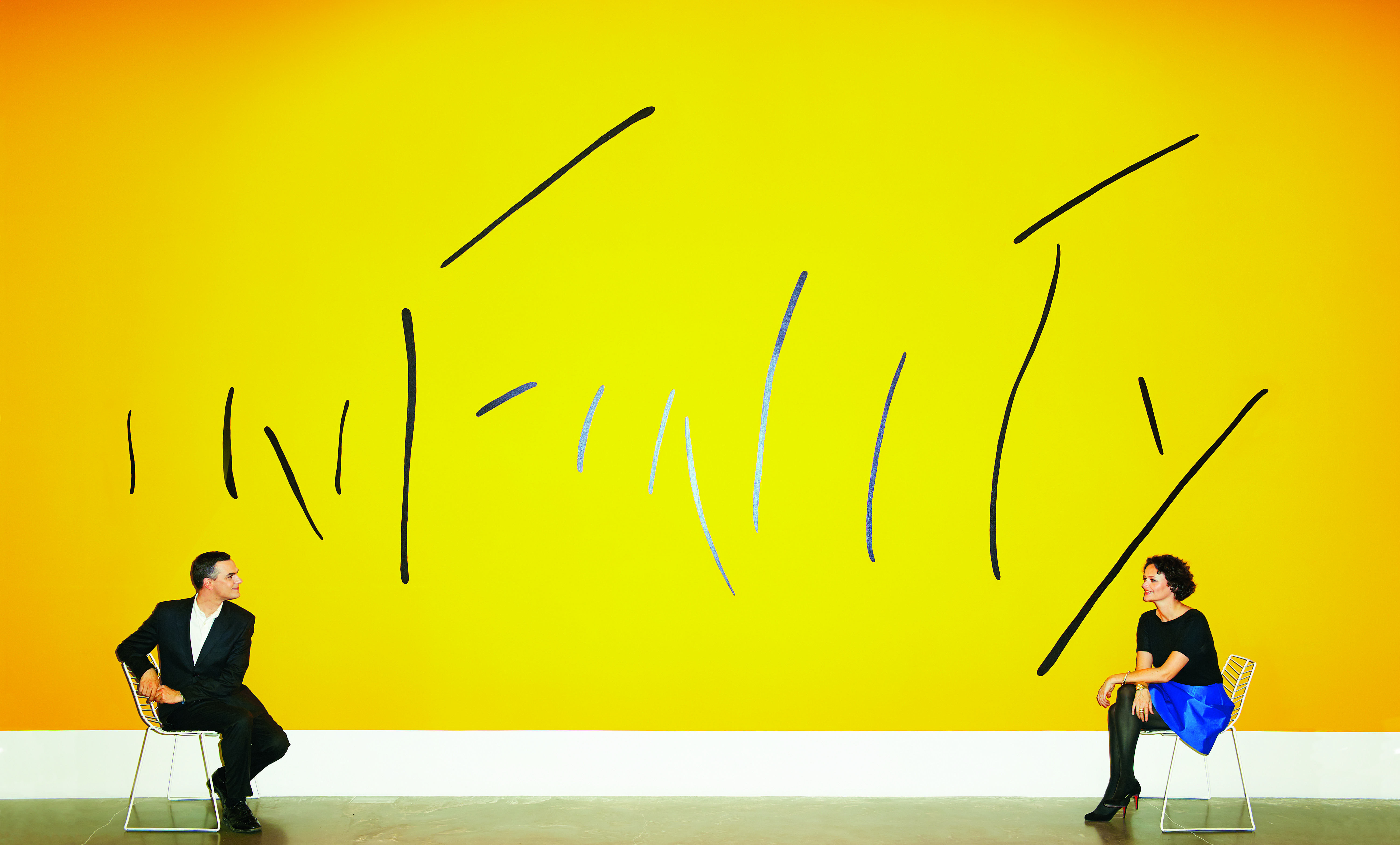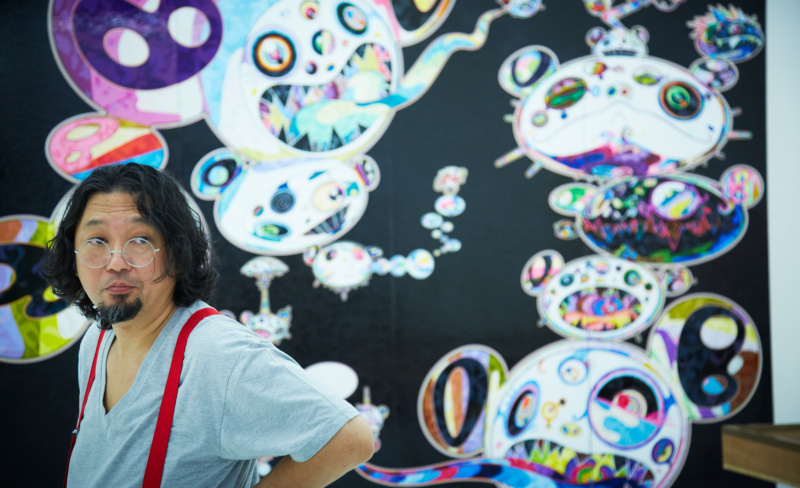
Virgil Abloh and Takashi Murakami first met more than 10 years ago in Murakami’s studio. Since then, the Japanese artist has continued apace with his multihyphenate global practice making deeply layered fantastical paintings, supporting younger artists through his gallery platform Kaikai Kiki and presenting his work in myriad exhibitions, including a 2010 retrospective at the Palace of Versailles. Meanwhile, Abloh has rocketed to the top of the fashion universe, a position confirmed via his appointment earlier this year as Men’s Artistic Director at Louis Vuitton. Through it all, the two have built a friendship and a shared creative practice that pushes against the parameters of both fashion and art, shaking the foundations of the institutions.

Sara Roffino: You’ve known each other a long time. What about each other do you remember from first impressions?
Virgil Abloh: At the time when we originally met I was working on an album packaging for Kanye West. I was the assistant on that project, and what I learned and admired and what stuck to me about Takashi’s process from the very early days is the impact of his creative exercise. I saw the way he executes an idea in an artistic sense—how not only it is creative but that it is well-versed and well-executed in every way.
Takashi Murakami: Kim Jones told me he also came at the same time to my studio, do you remember?
VA: Yeah, I remember, but it’s been so many years of working hard that the memories are tricky. It’s the sign of a good life.
TM: You guys have made success. I’m still in the same place. [Laughter.] Virgil was an assistant or intern then and now he is the center of the fashion industry. There’s just no comparison.
VA: I think what makes us a powerful combination is that we embrace the now. We come from two different worlds and two different practices, but we found our point of intersection in the work we create together, which is a commentary inspired by current times and current freedom.
 Kyoto Ensō, 2018
Kyoto Ensō, 2018Acrylic on canvas mounted on aluminum frame
55 1/2 x 47 1/4 x 2 inches
141 x 120 x 5 cm
Acrylic on canvas mounted on aluminum frame
55 1/2 x 47 1/4 x 2 inches
141 x 120 x 5 cm
©︎ Virgil Abloh and ©︎ Takashi Murakami. Courtesy of Gagosian.
SR: You both have had to prove yourselves in a way that others haven’t because you have not come from the traditional places or educational systems that people come through in your roles as a major contemporary artist and head of a fashion house. How has that experience informed or driven the creative process?
TM: This might not answer your question, but I really want to understand the mystery of how Virgil does all his work. On Instagram it looks like right now he’s just a DJ, but at the same time he is approving designs for Off-White and Louis Vuitton and doing all these other jobs. It’s quite a mystery. I want to know how he does it so I can do it as well. [Laughter.]
VA: For me, in order to be interdisciplinary I have to live with interdisciplinarity. I work in one stream of consciousness. How I know an idea is relevant is by diversifying myself—in the kind of people I talk to, relate to, the industries I work in, the cities I travel to. When it comes to having creative output I’m drawing from increasing experience, so the method to my madness is to do all the things that I’m inspired by and not remove myself from anything that interests me.
TM: Do you never get sick or tired even though you’re doing everything? [Laughter.]
VA: I don’t work. I’m just living. The things I do are my calling. The only things I feel compelled to do are to put out creatively and have a dialogue with the world. The world consumes art but it also consumes music, it also consumes fashion and utilities. All those things have someone deciding what they should be and I’ve made it my practice to have an opinion and an output.
TM: Virgil is just so driven to do his absolute best, he must be very good at creating an environment around him that makes everyone do their best.
VA: It’s an honor.

SR: Virgil once said that when things are uncomfortable in a collaboration is the moment when a new space can emerge. Have there been any uncomfortable moments that were ultimately creatively fruitful within your collaboration?
TM: I don’t recall such an uncomfortable moment in this collaboration, do you, Virgil?
VA: Our collaboration, I think, is rooted in filling a void. We both see a space within the art world for artists to come together and create. It’s weird—in a way it doesn’t feel like a collaboration, it feels like we’ve joined our brains together to think of an output, which I find more advanced than the word collaboration.

SR: How would you describe the void that you’re filling?
VA: It’s the notion that an artist’s work sits differently if they combine with somebody else to make artwork, and by us making these exhibitions and wanting these exhibitions a certain way, we find that we’re engaging a new population that is interested in art. And we’re having a dialogue with our own followings and the collectors of our own art, which I find super interesting.
TM: We’re really lucky that there are clients who are willing to buy these collaborative works. Both from the art world and the fashion world there are a lot of people enjoying the project and acquiring the works. That’s the reason we can push this project forward. The shows in London and Paris were very successful. We’re doing the next show in Los Angeles, where we can do a much larger-scale show.

SR: Takashi has very maximalist aesthetic with bold colors and much more going on visuallythan the minimalist Bauhaus-inspired aesthetic Virgil usually works in. What is it like to work with somebody whose aesthetic approach is so different?
VA: Visually, I work in a realm that’s a lot about presence, the idea, the representation, the abstraction. So I wholeheartedly believe in Takashi’s concept of the superflat. And his work articulates that in a visual form that I identify with. I can be quite maximalist as well, depending on the medium or the premise. What’s been intriguing in the collaboration is how we’re able to combine iconography and these symbols that are known as part of Off-White—be it the red tab or the yellow industrial strap or the cross logo—and draw a relationship to Takashi’s iconography, signaling a marker of the two worlds coming together.
TM: At first it looks as if Virgil’s work is very minimalist, but I think that as he progresses he will continue—just as he is in fashion—eating and digesting all these different forms and directions in art and then creating something that reflects them. Virgil and I are similar in that when we move forward, we eat up the forms around us and digest them. Virgil’s speed is so much faster, I’m hoping I can keep up and not get completely digested myself.

SR: Takashi has employed a lot of satire in his practice, whereas Virgil talks about irony a lot, although the practices themselves are obviously ver y sincere. Satire and irony are important tools for a critical approach to any sort of creative output. I’m wondering if you can talk about what the use of satire and irony accomplishes and how it comes together in the work you do together?
TM: When I’m watching YouTube and I see surfers riding enormous waves—maybe they are taken there by helicopter and build momentum using a Jet Ski and then they ride the huge wave—that’s what the mood is like in this collaboration. Virgil is a surfer and everyone, including myself, is saying, “Really, can you ride such an enormous wave?” but we all go by helicopter to the wave and it works. Surfing is only possible because these huge waves are born because of how this earth is and because of how the universe is, and the weather conditions that create the huge wave. When I’m working with Virgil I feel like the important thing is to be on the same rhythm and taking the same step as the environment around us, so I haven’t been thinking about irony. I’m just thinking: Can we ride this huge wave? And, oh yeah, we did.
VA: Satire and irony are looming themes that are part of our now. I think they describe contemporary thought and the generation that exists now. Maybe that’s what creates the wave Takashi is referencing. Our dialogue is not so much embedded in the art, it’s embedded in the atmosphere that we’re creating.

SR: You’ve both approached your practices in specific relationship with the audience—with an intention to shift a perspective or to open up a perspective. How does this specific collaboration do that and go beyond just bringing people from the art world to the fashion world? What are the linguistic or institutional frameworks you are hoping to shift through this collaboration?
TM: Because I am much older than Virgil, Virgil has commented on the work that I have already done, especially my collaboration with Louis Vuitton. The fact that he referenced it made me really happy because while the collaboration was noted in both the art industry and the fashion industry, it wasn’t viewed as anything significant in either world. But I found that there was a recipient in the form of Virgil. He digested it and it became part of his own expression. Art is sort of a closed-off industry. Today with social media it looks like people are in dialogue and expressing together but it’s still a solitary process, so to know that there was a recipient and for Virgil to actually explain to me what he received and how he expressed it was such a fresh feeling. I was moved by it. In terms of the new audience, Virgil has created a new window so it is a new experience for me, and that’s why I can come up with new ideas as well.
VA: I mimic what Takashi said. It’s part of the motivation that there’s a new audience. There’s been a boundary between art and fashion that you couldn’t cross. In my own work I’m interested in showing how those lines can be crossed and how new bridges can be built. The great thing is our two exhibitions at Gagosian have shown what the new audience looks and feels like and what they’re intrigued by. That Takashi and I have been able to make work that represents that community is quite inspiring.
SR: That kind of leads into my next question. In Western art history, there’s a pattern of a group wanting to overcome the institution and develop a new system and then becoming the people in power. We’re in a moment where that’s happening with you becoming that establishment. How does that feel and what does it mean for the people that might come next?
VA: For me that’s part of the motivation. As the world evolves, we should feel it evolve. I think the establishment should evolve to give new opportunities. I see that as what unites Takashi and I. In the 10 years I’ve known him, I’ve seen his work with Kaikai Kiki Gallery and I’ve learned about many of artists he has given a platform to through his own work. Mr. Madsaki is a favorite artist of mine who I was introduced to because of Takashi’s generosity. I learn from him.
TM: People in the artworld are probably still looking at this collaboration coolly and not too enthusiastically, which is the way it’s been since my collaboration with Louis Vuitton. Maybe in 10 years someone who is lining up outside to buy our collaboration T-shirts will become a famous designer and say, “Oh, that was my inspiration.” Maybe then we’ll know the kind of effect this had. At this moment, at least in the artworld, the perception is still a little bit cool.

SR: You both exemplify a breaking down of the accepted difference between a brand and an artist. How do you feel you embody that shift and what are the implications of it?
VA: It’s hard to compare artists, but the ones that sort of represented a time or were leaders of a movement treaded the line between name as brand and artwork as brand as an extension of their identity. More than anything I think we’re behaving in a modern way and we’re not letting any perception hold us back, which is the ultimate freedom. The only way to really measure these moves is to wait 30 years and see.
TM: There is a zone of supremacy in the art world and there is a sense that fine art is the most precious and has the highest status. My collaboration with Virgil is trying to create something that is completely outside of that framework, so I totally understand why the reaction is not warm. And I believe that even though Virgil is young, the achievement of our collaboration will become apparent after Virgil has died. Right now, there’s not much we can do about the reception. Of course, I care about the reception, but I feel like we shouldn’t care about it and keep on, because in the future, I think this collaboration can become part of a history that will recognize what we did. I think that at least a few young people are really looking at it now, and, like I said earlier, it would be great in 10 or 20 years from now if I’m still alive people will say it affected them or it inspired them.

SR: I think it goes back to something Virgil talks about a lot, which is the role of Duchamp behind all of this, and Duchamp’s presentation of the urinal as Fountain, and what that means about what art can be and who can be an artist.
VA: Yes, I think that essential to your question is intention and the practice that predates output. Takashi and I are figureheads of an intense study that has taken place over many years about something that speaks about art now. Trying to define art or what makes an artist is an age-old question that may or may not be at play. I don’t know if I’m answering your question, maybe Takashi can take it from there.
TM: It’s destiny that Virgil has become the designer of Louis Vuitton and now Louis Vuitton has come to have a world-class museum, the Louis Vuitton Foundation. It’s become so complex now, and it’s not just about artists trying to transmit their ideas, from the brand side they’re approaching the art and artists as well. So people who understand the context of art are not only interested in what artists are thinking but now they’re really in tune with the market and the environment surrounding art. Museums used to be just nonprofit organizations with a benevolent existence, but now it has to do with branding as well, and Virgil and I are also involved in fashion brands but the collaboration itself is between the creators and doesn’t really have to deal with the brand. It’s very complex. It’s that huge wave I was talking about that we’ve been surfing. When I heard that Virgil became the designer for Louis Vuitton, it was around the time I was writing an introductory article for him because he was chosen as one of the Time 100. I really felt it was some kind of fate. Maybe I think that way because I’m old, and maybe Virgil is still laughing in his usual laugh—
VA: [Laughter.]

